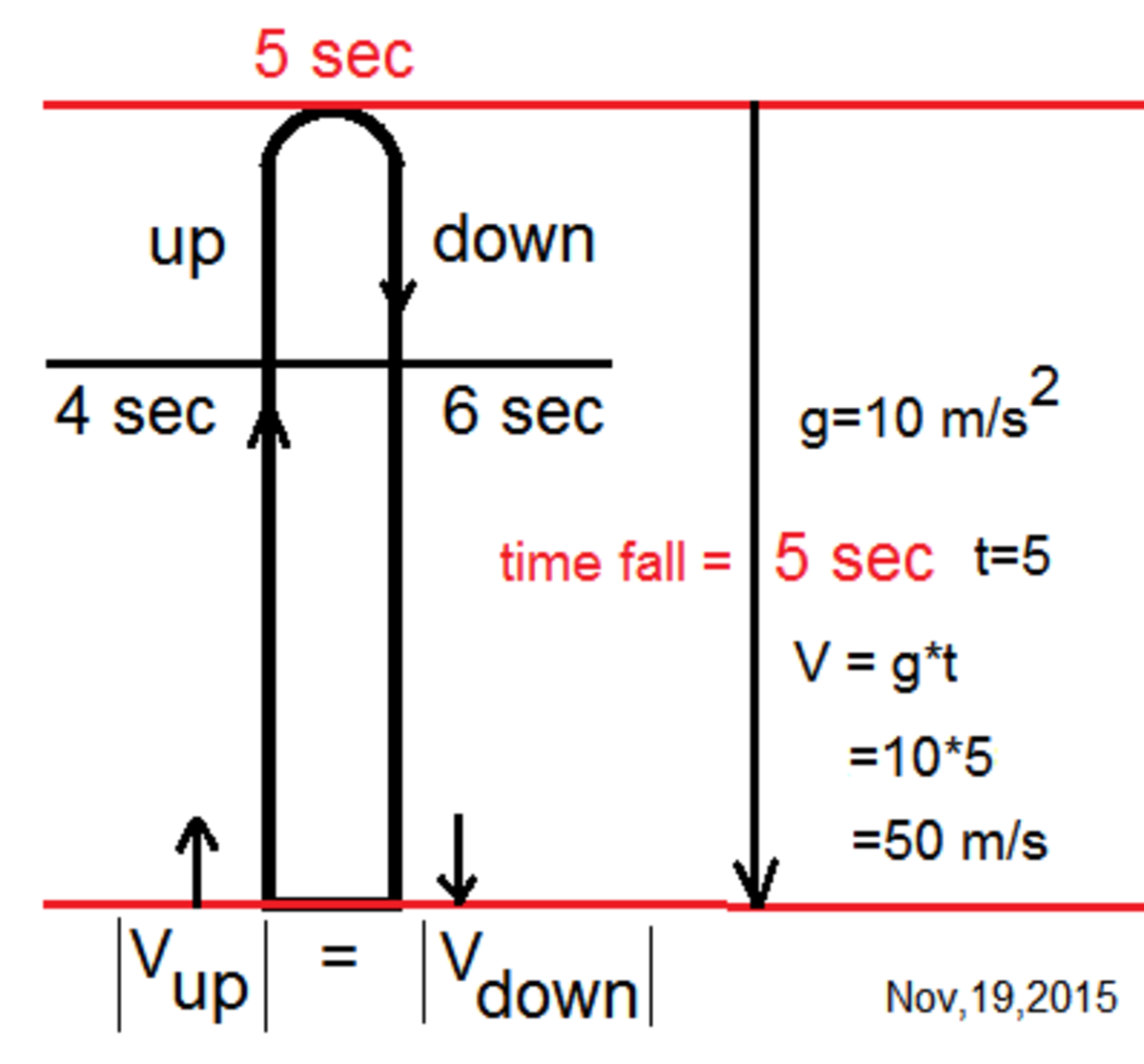Can we find its velocity?
A ball shot straight up from the ground is at the same height after both 4 seconds and 6 seconds. If the acceleration due to gravity is 10m/s , what was the initial velocity of the ball?
This section requires Javascript.
You are seeing this because something didn't load right. We suggest you, (a) try
refreshing the page, (b) enabling javascript if it is disabled on your browser and,
finally, (c)
loading the
non-javascript version of this page
. We're sorry about the hassle.

Assuming that the motion is entirely vertical, the height y of the ball (in m ) will be given by the equation
y = v t − 2 g t 2 = v t − 5 t 2 ,
where v is the initial upward velocity and where we have taken g to be 1 0 m / s 2 as suggested. Now for the ball to be at the same height at both t = 4 s and t = 6 s we will require that
4 v − 5 ∗ 4 2 = 6 v − 5 ∗ 6 2 ⟹ 4 v − 8 0 = 6 v − 1 8 0 ⟹ 1 0 0 = 2 v ⟹ v = 5 0 m / s .